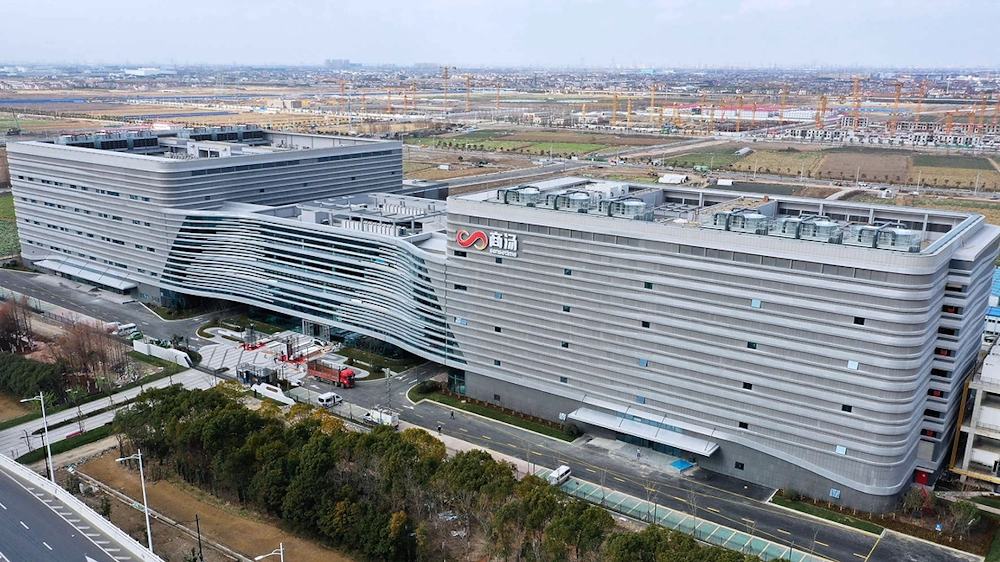 AI Data Centers
AI Data Centers
These are massive facilities that house the computing infrastructure necessary for AI
"AI data centers are booming, sucking up water, energy, and land," claims a business journal. "Data centers are sprouting up as a result of the AI boom, minting fortunes, sucking up energy, and changing rural America." We could expand on that and say changing countries and policies all over the world.
AI data centers are specialized facilities that are designed to support the computing infrastructure necessary for AI operations. These huge buildings are filled with thousands of computer servers running 24 hours a day 7 days a week. In order to operate, data centers need a continuous, stable source of energy, cooling water, and a host of support structures and staff.

Issues
The growth of AI data centers requires careful consideration and management to overcome challenges for energy infrastructure, environmental sustainability, and the impact they have on local communities.
Energy Consumption
AI is driving a boom in data center construction and usage. AI operations consume significantly more energy than traditional computing tasks. A single ChatGPT query uses about 10 times more electricity than a regular Google search. Global data center electricity demand is projected to more than double between 2022 and 2026, with AI playing a significant role. AI data centers' annual power consumption is expected to reach 90 terawatt-hours by 2026, a tenfold increase from 2022 levels. The IDC forecasts AI datacenter energy consumption to grow at a CAGR of 44.7% through 2027. Global datacenter electricity consumption is expected to more than double between 2023 and 2028.
Environmental Impact
Data centers currently account for over 1% of global electricity use, but this percentage is expected to rise to 3-4% by 2030. In the same period, carbon emissions will likely double. Data centers consume large amounts of water for cooling, exacerbating water stress in some regions. Electronic waste from data centers often contains hazardous materials like mercury and lead. The mining of rare earth elements for AI hardware can be environmentally destructive.
Trends
There is a new trend in data centers in the shift towards renewable energy sources, such as solar and wind, which now power a large portion of the in facilities in Singapore and Japan. Innovations in cooling technologies, such as using ambient air or seawater, are being implemented to reduce electricity use, which is a major cost in data center operations. In Thailand a new data center utilizes an advanced cooling system that reduces energy consumption by 40% compared to traditional methods. Also, more data centers are aiming for green building certifications like LEED or the BCA Green Mark, reflecting a commitment to sustainability that not only reduces operational costs but also appeals to the environmentally aware.

Countries like Singapore and China have implemented strict data sovereignty laws that require data to be stored locally, driving the construction of new data centers. In India, the government's push for digital transformation has included incentives for data center investments, such as tax breaks and land allocation, which have spurred domestic and international enterprises to establish large-scale operations. However, these investments are also subject to complex regulatory approvals that can affect the pace of development. For example, Japan's recent amendments to its data protection laws have led to heightened security measures in data centers, ensuring compliance with international standards but also imposing additional operational burdens. These regulatory landscapes not only shape where and how data centers operate but also influence global strategies for data management and protection in the region.
Potential Solutions
The rapid expansion of data centers threatens electricity availability and water access in many areas. There are concerns about the impact on climate goals and carbon emissions. The industry faces challenges in meeting the growing demand for power while maintaining reliability and carbon-free operations. Here are some potential solutions:
- Improving efficiency in chip hardware manufacturing.
- Improving efficiency in data center operations.
- Constructing renewable energy sources to power data centers.
- Implementing laws and regulations to address environmental impacts.
- More transparency in data center operating usage and costs.
 Links
Links
bloomenergy.com/blog/ai-data-center/
time.com/6987773/ai-data-centers-energy-usage-climate-change/
goldmansachs.com/insights/articles/AI-poised-to-drive-160-increase-in-power-demand
unep.org/news-and-stories/story/ai-has-environmental-problem-heres-what-world-can-do-about
idc.com/getdoc.jsp?containerId=prUS52611224